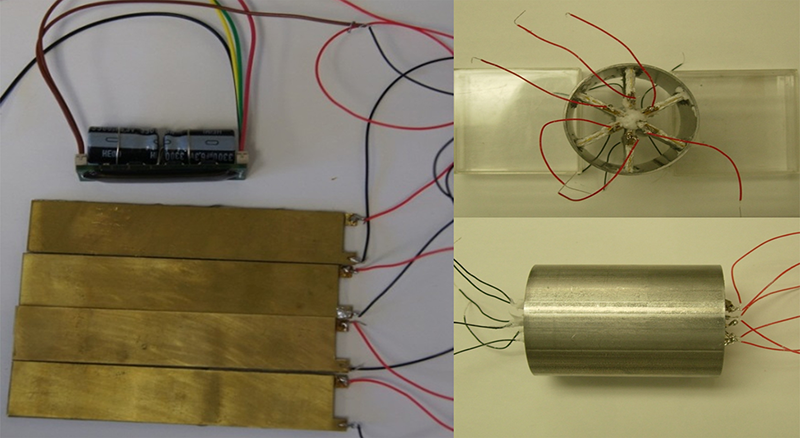Wearable devices come in all shapes and forms. From monitoring your heart rate and step count to measuring blood pressure and detecting fall, these devices carry out a wide variety of tasks. However, they all have one drawback and that is their inability to generate power for an extended period of time. As a result, scientists are searching for novel ways to power wearable devices. If they become successful, the traditional batteries of today will become a thing of the past.
-
Researchers Use Body’s Glucose as Power Source for Medical Implants
Researchers at Washington State University have developed a unique fuel cell that harvests glucose and turns it into enough electric power to energize a biosensor attached to it.
As the biofuel cell doesn’t use any toxic ingredients and is supposedly more stable, therefore it is safe and applicable for long term applications within the body.
The researchers believe this innovative technology can be used to develop heart monitors, continuous glucose monitoring devices, and other health wearables. The new sensor could also remove the need to prick a finger for testing of certain diseases, such as diabetes.
-
Yarn Battery to Power Smart Clothes and Wearables
Researchers in Hong Kong have created a yarn-shaped rechargeable zinc-ion battery that produces power when stretched, bent, cut, or washed with water. Researchers believe this new battery could be woven into smart clothes filled with sensors and integrated into commercially manufactured textiles to power electronics, wearable displays, and medical implants.
The yarn is now a member of a group of flexible energy-generating and storing devices that can be combined into power fabrics, such as solar ribbons (can be woven into fabrics), knittable supercapacitors, and power-generating yarns that use mechanical energy to produce power.
-
Researchers Develop Ultra-Thin Electronic Tattoos that Can Power Wearables
Researchers from Carnegie Mellon University and the University of Coimbra of Portugal have developed a new method for creating highly flexible, tattoo-like circuits that could one day power wearable devices.
The process uses a trace of an electrically conductive, liquid metal alloy that is applied to tattoo paper that adheres to human skin. The ultra-thin electronic tattoos can be applied with water, the same way a child’s decorative tattoo is applied with a damp sponge, IEEE Globalspec.
-
Open-Mesoporous Carbon Nanofibers May Provide Power to Flexible Power Sensors
A team of researchers in Germany has engineered a next-generation metal-air batteries, which can be easily fabricated into flexible and wristband-like cells. Although further research is needed, current studies have found that these devices could provide enormous opportunities for the next generation of flexible, wearable and bio-adaptable power sources.
-
Wireless Implantable Devices Can Be Powered By Radio Frequency Waves
MIT scientists, working with researchers from Brigham and Women’s Hospital, have developed a new system to power and communicate with devices implanted deep within the human body. Systems like this could be used for drug delivery, monitor conditions inside the body, or treat diseases by stimulating the brain with electricity or light.
The implants, powered by radio frequency waves, can safely pass through human tissues. In tests in lab animals, the researchers showed that the waves can power devices located 10 centimeters deep in tissue, from a distance of 1 meter.
-
New Wearable Device Harvests Energy from Low-frequency Vibrations
A team of researchers from Penn State’s Materials Research Institute and the University of Utah has developed a wearable piezoelectric energy harvester that could generate energy simply from a swing of the arm while walking or jogging. The small device, about the size of a wristwatch, can produce enough power to run a personal health monitoring system.
By providing continuous power to a rechargeable battery or supercapacitor, these devices can reduce the labor cost of changing out batteries when they fail and keep dead batteries out of landfills.

-
Electronic Paper Display Is Powered by Energy Harvesting Technology
Toppan Printing Co., Ltd., a Japanese global printing company, has developed an electronic paper display (EPD) powered by energy harvesting technology. This EPD can be used to generate a display on battery-free Internet of Things (IoT) devices compliant with the EnOcean standard.
The EnOcean is an energy harvesting wireless technology, whereby minute amounts of energy from external sources, such as heat, sunlight, and vibration, are captured and converted into electrical energy. It is used primarily in building automation systems, and is also applied to other applications in industry, transportation, logistics and smart homes.













